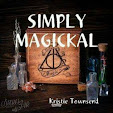What is an essential oil?
An essential oil is a concentrated, volatile, aromatic liquid that is obtained from the fruits, seeds, flowers, bark, stems, roots, leaves or other parts of a plant. There are estimated to be 10,000 aromatic plants (ie that contain essential oils) on Earth, and about 500 of these are processed commercially for essential oil extraction. These oils have been used for centuries for both their healing and aromatic benefits. This is most commonly accomplished by steam distillation (steam is passed through the plant material), and sometimes hydrodistillation (the plant is gently boiled in water). More modern methods include mechanically expressing oils from citrus fruit peel, and solvent extraction. Solvent extracted oils include CO2 extracts and absolutes, and these are not classed as essential oils.
Purity and quality. Equally as important.
Plant Therapy’s standards of quality are some of the strictest in the industry. Before we sell an essential oil we do everything possible to establish that it is 100% pure, natural, AND of the highest quality, making it appropriate for use in aromatherapy. To ensure that each oil meets these strict standards, Plant Therapy works directly with world renowned essential oil expert, Robert Tisserand, and several analytical laboratories.
From the beginning.
Before we even obtain a sample, we need to know everything about the farmer, distiller or supplier. We need to know their background, reputation, commitment to quality, and commitment to the industry. Once this has been established to our satisfaction, we then move on to the oil.
The Oils.
Essential oils are composed of many constituents, typically about 100, though it can range from 10 to 200. Factors that affect the composition, and therefore the quality of an oil, include where the plant was grown (country of origin, latitude, elevation) soil and weather conditions, time of day and time of year of harvest, and various parameters of distillation.
Essential oils with the same common name, such as Eucalyptus, Lemongrass or Wintergreen, may come from more than one species of plant. Others, such as Basil, Rosemary or Thyme, come from the same species, but they come in different 'chemotypes', which means there are significant differences in the composition from one chemotype to another.
All of these factors potentially affect both quality and therapeutic effect. When we finally know what oil we are sampling we can then move on to the testing phase. We typically test 3-5 samples from different suppliers for every essential oil that we buy. Even when we re-purchase from the same supplier, we test the new batch of oil.
Testing the oil.
Our essential oils are first organoleptically tested by Robert Tisserand before being sent to a third party testing facility. Robert has been evaluating essential oils professionally for over 40 years. Organoleptic testing means smelling the oil from a testing strip over time – some characteristics do not reveal themselves until the oil has been evaporating for 30 minutes or more. It also includes evaluating the color, consistency and general appearance of an oil, and comparing it to what a good quality oil should look like and smell like.
Following this, our oils are sent to one of several third-party laboratories where they undergo multiple tests including Gas Chromatography and Mass Spectrometry (also known as GC/MS testing). Every batch of oil we receive goes through both rounds of testing, and these tests will show us the quality of the oil and also what is in the oil. Most contaminants or adulterants show up with these tests, and for those that don’t, if we suspect that some of what looks like a natural constituent of an oil might be a synthetic addition, we use chiral analysis – a more sophisticated form of gas chromatography – to find out if it is in fact, a natural constituent or a synthetic addition.
Even though we work with distillers and farmers who have repeatedly proven to provide excellent quality essential oils, when Plant Therapy claims that our oils are 100% pure and of the highest quality, we want to make sure that we are doing everything possible to guarantee that.
Making it to our customers.
Essential oil batches are eliminated at each step of the quality control process until we have found the best, and only the best ones make it through to our facility in Southern Idaho to be bottled, labeled and shipped off to our customers.
Batch information and testing details.
Every bottle of oil that you purchase from Plant Therapy will have a specific batch code that tells us exactly what batch of oil is in your bottle. This information is also directly linked to the testing reports for each batch of oil. You can see each essential oil’s GC/MS report by going to the essential oil’s product page and clicking on Test Reports.
www.planttherapy.com
